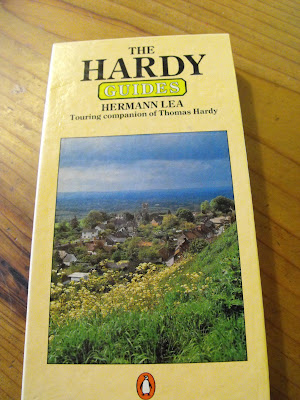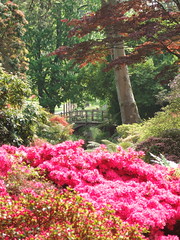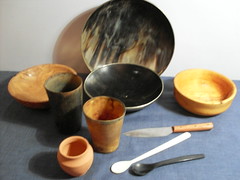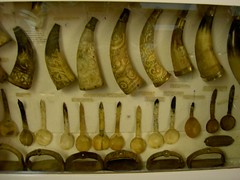The view West along the Towy Valley from Dryslwyn Castle.

Dryslywn Castle in winter.

Every time I drive along the A40 and pass the cross roads at Broad Oak, I look at the low-lying marshy fields and think of them strewn with dead and dieing men. This routeway along the Towy Valley has been in use since the Roman times, when it joined the forts at Carmarthen and Llandeilo and beyond, and doubtless since prehistoric times, as it is an obvious route along the valley bottom. The Grongar Hill of Dyer's famous poem overlooks it and was crowned by an Iron Age hillfort - for there was of course an earlier chain of command than the Roman forts and the later Medieval castles. Originally a glaciated valley, now silted up, a line of hills formed from the harder post-Silurian rocks has formed these obvious settlement areas. Dryslwyn Castle and Dinefwr Castle still stand on two of them.
This particular straight stretch of the A40 was constructed by Thomas Telford in the 1820s so we are unsure of the exact route of the original road. Higher land, heavily wooded in 1257 when the battle of Derwen Fawr took place, overlooks the marshy land. It was here, on the first two days of June, that the Welsh took on the Normans and routed them.
In this year of 1257, Llywelyn III and his uncles Maredudd ap Rhys and Maredudd ap Owain were the Welsh power in the area and the uncles held Dryslywn Castle. The two Maredudds had strong links with Whitland Abbey to the West, as they had been responsible for endowing the Abbey. Stephen de Bauson, and his Norman henchmen and mixed army of Norman, Gascon and even Welsh soldiers attacked Whitland Abbey, killing the monks and lay brothers, and destroying buildings there. They then proceeded along the Towy Valley, laying waste to the small farms and dwellings there, cocking a snook at the Welsh Lords in lofty Dryslwyn who were, I should imagine, grinding their teeth and planning revenge. However, accounts suggest that they avoided the actual main (A40) route since that led past the castles at Llanegwad and Dryslwyn which were in Welsh hands, so they must have taken the route south of the River Towy, crossing where the river can be easily forded near Derwen Fawr and camped the night nearby. Perhaps the intention was to move downstream and the laying waste to the Towy Valley communities would have convinced the Maredudds that they should surrender Dryslwyn without a fight.
The field names still record the slaughter on the first day of June: Congl Gwaedd - the corner of shouting - for it is written then noise figured much in the lead up to the battle, with Llewelyn's men cwtched up in the woodland overlooking the low ground and intimidating the opposing army with a barrage of noise and well-placed arrows (Welsh archers had a fearsome and well-deserved reputation as they proved at Agincourt).
Llether Cadfan - near the present Cadfan Farm - the slope of battle; Cae Dial - the field of retribution; and Cae Trac - the field of defeat, destruction and death . . . Those few words more than sum up the outcome of the battle - particularly to a Welshman.
At Cardigan, 30 or so miles North, were further supplies and reinforcements. Perhaps realizing they had bitten off more than they could chew, the Norman lord and his army moved off but when they reached Llether Cadfan they found that the Welsh army had come out of hiding. In this first fight, the English Army lost its supply train, with horses, weapons, armour and pack animals. Routed, the surviving army apparently headed northwards towards Talley and eventually Cardigan. The valley bottom was wet and marshy, the tributary valleys are steep narrow gorges. Sources suggest that the second battle may have taken place at Pont Myddfai - where several tributaries meet (noted in the records) and one of the streams has an unusual name - Nant Stephanau - quite possibly the place where Stephen du Bauson was killed. In the marshy ground, between 1000 and 3000 troops were killed - dragged from their mired horses and put to the sword. For hundreds of years it was the greatest defeat of an "English" army by the Welsh.
Many thanks to
http://www.welshbattlefields.org.uk/eng/?page_id=18 for the facts used in this account.

Above, looking Eastwards (with a touch of South!) from Dryslywn Castle.
Sorry I don't have any photos of the actual battlefield.



























